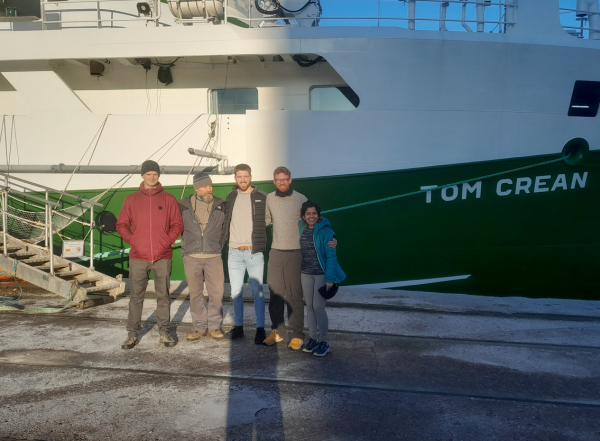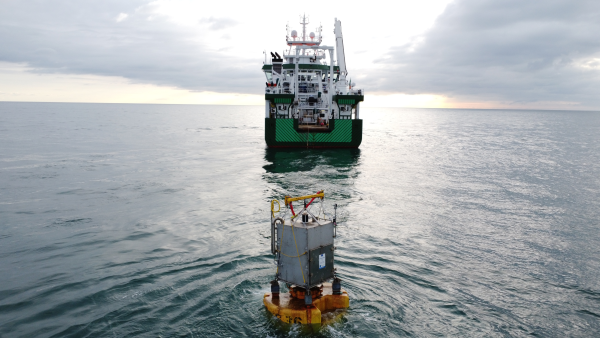iCRAG researchers Andy Trafford and Dr Mark Coughlan have recently returned from a research cruise on the RV Tom Crean in the southern Irish Sea. During the cruise the team examined the feasibility of using a remote monitoring system using Distributed Acoustic Sensing (DAS) on the seabed to investigate both passive and active seismic processes. Bathymetry and sparker reflection data were also collected.
Scour caused by current and wave loading around offshore structures can significantly reduce the ultimate capacity of a foundation as well as the system stiffness. This could cause resonant vibrations in the structure if its natural frequency aligns with any of the excitation frequencies from the rotating blades or the passing sea waves, and can lead to a significant reduction in fatigue life.
Over recent years, fibre-optic technologies have been used for an increasing array of applications. The dual ability of DAS to monitor both the development of strain on the seabed associated with scour processes and also the underlying small strain shear stiffness degradation around the structure from passive seismic monitoring presents considerable potential for designers and managers of these structures.
This research will contribute to a wider body of knowledge as part of the development of the offshore wind sector in Ireland which under the Climate Action Plan 2021 recommits Ireland to the ambition to install 5GW of offshore wind capacity in our maritime area by 2030.

Picured left to right: Dr David Craig (DIAS), Andy Trafford (iCRAG at UCD), Ennis de Vos (UCD), Dr Mark Coughlan (iCRAG at UCD), Athira Vijayan (DIAS)




